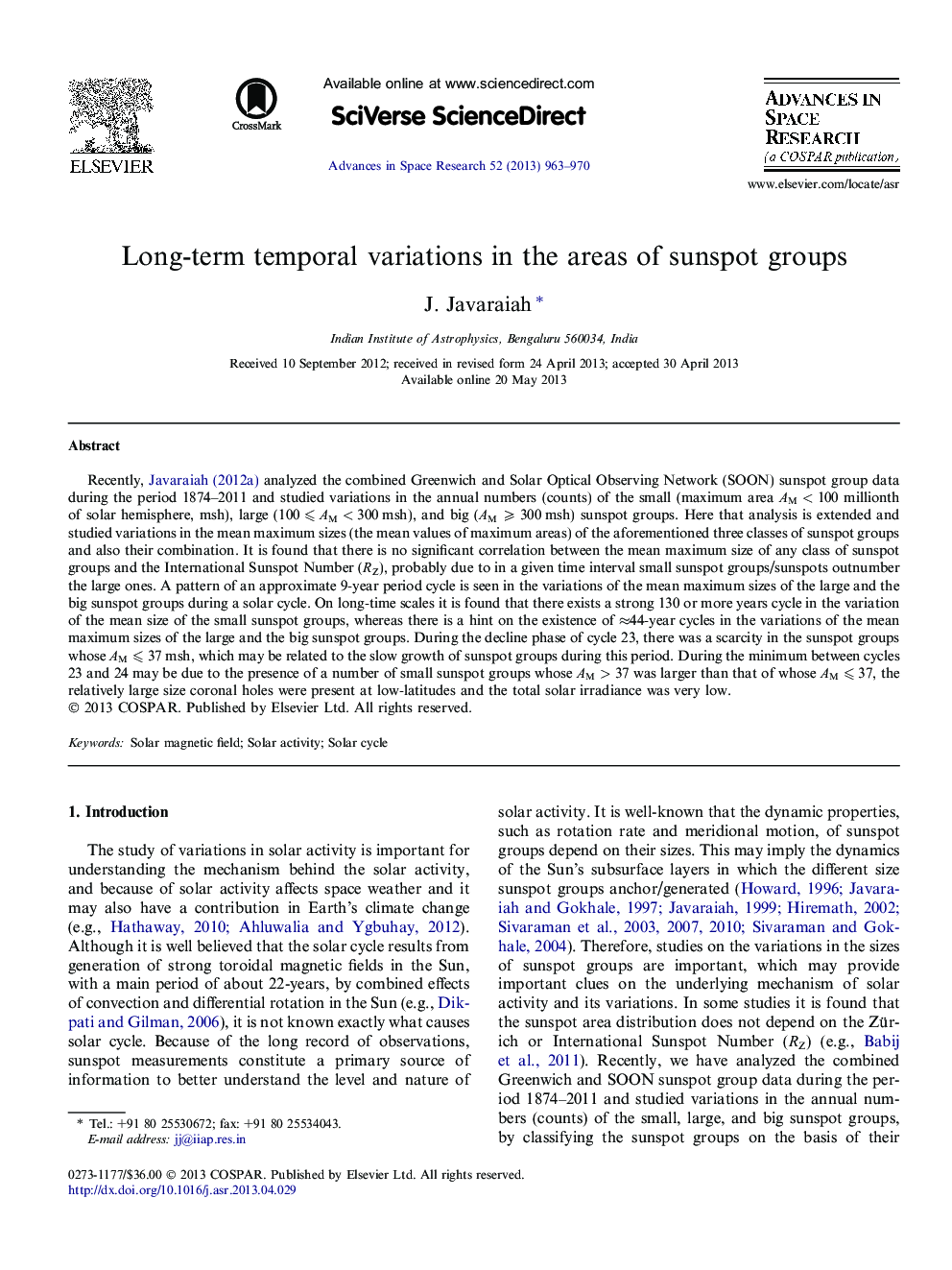| Article ID | Journal | Published Year | Pages | File Type |
|---|---|---|---|---|
| 1764632 | Advances in Space Research | 2013 | 8 Pages |
Abstract
Recently, ħ0125protectJavaraiah2012a) analyzed the combined Greenwich and Solar Optical Observing Network (SOON) sunspot group data during the period 1874-2011 and studied variations in the annual numbers (counts) of the small (maximum area AM<100 millionth of solar hemisphere, msh), large (100⩽AM<300msh), and big (AM⩾300msh) sunspot groups. Here that analysis is extended and studied variations in the mean maximum sizes (the mean values of maximum areas) of the aforementioned three classes of sunspot groups and also their combination. It is found that there is no significant correlation between the mean maximum size of any class of sunspot groups and the International Sunspot Number (RZ), probably due to in a given time interval small sunspot groups/sunspots outnumber the large ones. A pattern of an approximate 9-year period cycle is seen in the variations of the mean maximum sizes of the large and the big sunspot groups during a solar cycle. On long-time scales it is found that there exists a strong 130 or more years cycle in the variation of the mean size of the small sunspot groups, whereas there is a hint on the existence of â44-year cycles in the variations of the mean maximum sizes of the large and the big sunspot groups. During the decline phase of cycle 23, there was a scarcity in the sunspot groups whose AM⩽37msh, which may be related to the slow growth of sunspot groups during this period. During the minimum between cycles 23 and 24 may be due to the presence of a number of small sunspot groups whose AM>37 was larger than that of whose AM⩽37, the relatively large size coronal holes were present at low-latitudes and the total solar irradiance was very low.
Related Topics
Physical Sciences and Engineering
Earth and Planetary Sciences
Space and Planetary Science
Authors
J. Javaraiah,
